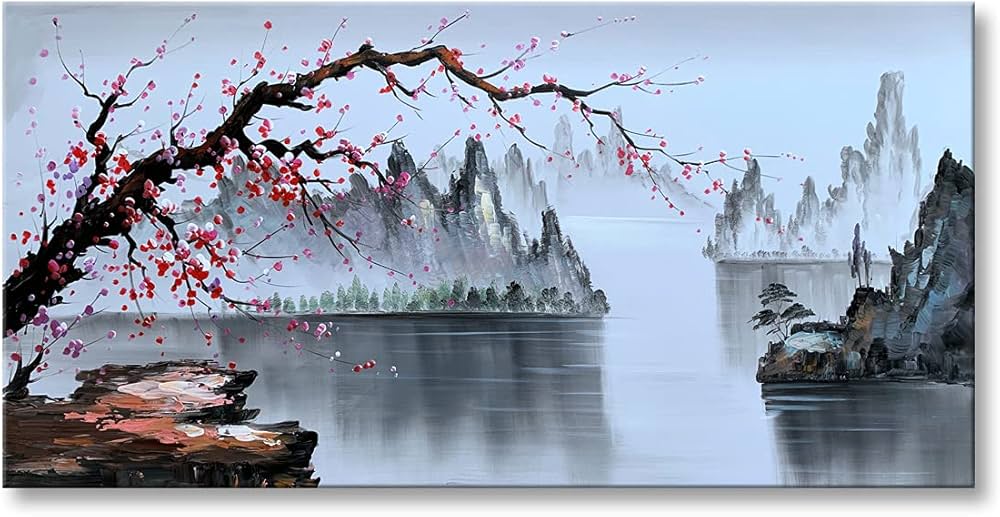
Chinese art, a vibrant reflection of the country’s rich history, is one of the most influential and enduring art traditions in the world. Over thousands of years, Chinese art has evolved, mirroring the profound cultural, philosophical, and social changes that have shaped the nation. From the early Bronze Age to modern times, Chinese art has been a medium through which ideas, beliefs, and historical events have been recorded and expressed. In this article, we will explore the evolution of Chinese art, from its origins in ancient times to its current global influence, all while highlighting its deep connection to Chinese culture.
The Ancient Foundations of Chinese Art
The roots of Chinese art trace back to the Neolithic period (around 10,000 BCE), when the earliest forms of Chinese art were created. Early Chinese art was largely functional, with objects such as pottery, tools, and ceremonial items reflecting the daily lives of ancient people. These early works were often made from clay and depicted human figures, animals, and geometric patterns. The pottery of this period is notable for its intricate designs, many of which carried symbolic meaning, showcasing the beginnings of Chinese artistic expression.
During the Shang Dynasty (1600–1046 BCE), art became more sophisticated, and the development of bronze casting reached its peak. Bronze vessels, often used in rituals and ceremonies, became some of the most important artifacts of this period. These bronzes were intricately cast and decorated with patterns and motifs that symbolized the power and status of the ruling elite. This marked the start of a deep intertwining between art, religion, and governance in Chinese culture.
The Zhou Dynasty (1046–256 BCE) continued the tradition of bronze casting, but it was during this period that the first major philosophical schools, such as Confucianism, Taoism, and Legalism, emerged. These philosophies began to influence not only Chinese politics but also its art. Art started to take on more symbolic meaning, with many works representing philosophical ideals such as harmony, balance, and the connection between humanity and nature.
The Influence of Calligraphy and Painting
As Chinese civilization developed, so too did its art forms. Calligraphy, which would become a hallmark of Chinese art, began to emerge during the Qin Dynasty (221–206 BCE). Early Chinese writing was inscribed on oracle bones and bronze vessels, but during the Han Dynasty (206 BCE–220 CE), calligraphy evolved into an art form. This period saw the development of different calligraphic styles, each with its own unique brushstroke techniques and stylistic conventions. Calligraphy was considered an essential skill for scholars, and it was often seen as a reflection of one’s inner character and intellectual prowess.
During the Tang Dynasty (618–907 CE), Chinese painting reached new heights of sophistication. The Tang period is often regarded as the golden age of Chinese art, with significant advancements in both portraiture and landscape painting. The works of this time were influenced by Taoist ideals, focusing on the beauty of nature, the ethereal qualities of the landscape, and the harmonious relationship between humans and the environment.
Landscape painting, in particular, became a dominant genre in Chinese art, and it remains one of the most distinctive features of Chinese artistic tradition. Famous artists such as Wang Wei, Zhang Zeduan, and Li Cheng captured the vastness and majesty of China’s natural landscape, painting sweeping vistas of mountains, rivers, and forests. These works were not just representations of the physical world but also expressions of the spiritual and philosophical ideals of the time.
The Role of Symbolism in Chinese Art
Throughout the development of Chinese art, symbolism played an essential role. Artists used a rich vocabulary of symbols, each imbued with deep meanings related to Chinese culture, history, and beliefs. Certain animals, plants, and objects were chosen for their symbolic meanings. For example, the dragon and phoenix were common motifs in Chinese art, representing imperial power and harmony, respectively. The lotus flower symbolized purity and enlightenment, while bamboo represented resilience and strength.
Chinese art also developed a unique approach to color and composition. Red, for example, was considered a lucky and auspicious color, symbolizing good fortune, happiness, and prosperity. Gold and jade were prized for their associations with wealth and immortality, while blue and green were often used to represent nature and tranquility.
The continued use of these symbols allowed Chinese artists to communicate complex ideas and narratives without the need for words. Art became a way to express religious, social, and political ideas while preserving the cultural identity of the Chinese people.
Modern Chinese Art: The Fusion of Tradition and Innovation
With the advent of the modern era, Chinese art underwent a profound transformation. The cultural and political upheavals of the 19th and 20th centuries, including the Opium Wars, the fall of the Qing Dynasty, and the rise of Communism, all had significant impacts on the direction of Chinese art. The traditional styles and methods that had flourished for centuries were challenged by new ideas and influences from the West.
During the early 20th century, Chinese artists began experimenting with Western artistic techniques, such as oil painting and perspective, while still retaining elements of traditional Chinese art. This fusion of Western and Eastern influences resulted in a new style of art that reflected the complexities of modern China. Artists such as Xu Beihong and Lin Fengmian became known for their ability to merge traditional Chinese art forms with modern Western styles.
In the latter half of the 20th century, under the influence of the Cultural Revolution (1966–1976), Chinese art took on a more propagandistic tone, with artists creating works that supported the ideals of the Communist Party. However, after the end of the Cultural Revolution, Chinese artists once again began to explore more personal and diverse themes, moving away from political propaganda and embracing global art movements such as abstract expressionism, surrealism, and pop art.
Contemporary Chinese Art and Global Influence
Today, Chinese art is more diverse and globally influential than ever before. Contemporary Chinese artists are making waves in the global art market, blending traditional techniques with modern styles and addressing both Chinese and global themes. Artists such as Ai Weiwei, Zhang Xiaogang, and Yue Minjun have gained international acclaim for their thought-provoking works that explore issues such as identity, political freedom, and social change.
Contemporary Chinese art is not limited to traditional media such as painting and sculpture. The use of digital art, installations, and performance art has expanded the ways in which Chinese artists can engage with audiences both in China and abroad. These artists continue to push boundaries, redefining what Chinese art can be in the modern world.
Final Thoughts
Chinese art, with its deep historical roots and evolving nature, offers a fascinating window into the cultural, social, and philosophical shifts that have shaped China over millennia. From the early pottery of the Neolithic period to the cutting-edge contemporary art of today, Chinese art has continually adapted, reflecting the changing tides of Chinese society while maintaining a strong connection to its traditional roots. As the global art scene becomes increasingly interconnected, Chinese art stands as a testament to the resilience and creativity of a culture that has survived and thrived for thousands of years.







